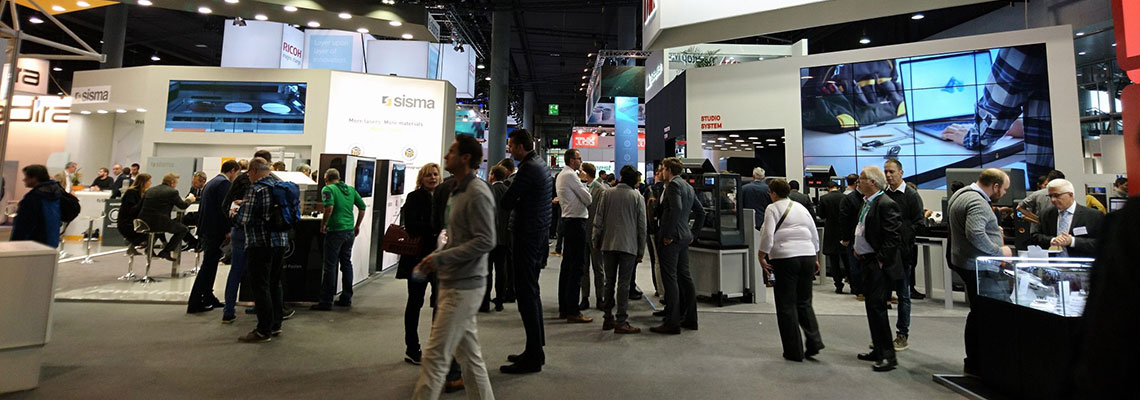
Why do trade show event organizers charge so much for booth space? For one, because they know that companies will pay it – and they will pay it because trade shows are well worth the investment. Trade shows provide companies a huge opportunity to forge new connections with people interested with what you offer. Once you leave the trade show, however, the organizer’s involvement ends and your company takes over. What you choose to do with the information will affect the success of your trade show. What is meant here is that your ability to record and follow up on the information you gather will ultimately determine how much business you create as a result of your trade show participation.
What to do with Business Cards
At the least, when you leave a trade show you’ll have a stack of business cards or a notepad of contact information. Your first order of business should be, at the very least, to input the data into a spreadsheet or sales software program. The longer the information goes un-catalogued, the more likely it is that your company won’t act on the information.
Tip – Ideally, have someone (or take shifts) enter contact information into a spreadsheet during the trade show, so your team can start making calls as early as possible. A business card scanner can help expedite this process.
Encouraging Information Collection
Half the battle at a trade show is encouraging visitors to part with their information – so your company needs to put together a plan for gathering this info, preferably offering a type of incentive. Probably the simplest method is to offer a draw for free products or services related to your company in exchange for contact information. However, you can pre-qualify your leads by having them fill out a brief questionnaire to ensure that you only contact leads with the best chance of a sales conversion.
Data Collection Methods
What is the best way to collect lead data at your next trade show event? There are a few different methods; the best depends on your access to technology and your ability to incorporate/promote said technology into your trade show booth. Here are a few options:
1) Tablet or Computer: Encourage visitors to enter contact information
Pros: Easily upload contact information into your system.
Cons: You can only capture the information of visitors directly at your booth.
2) Text Message: Have visitors text a keyword to a text-only mobile number, including their contact information to receive an entry or promotion.
Pros: Easily to upload contact information, promote via social media, get information from people not directly in front of your booth.
Cons: Your company needs to promote the code heavily on marketing material, websites, emails, etc. to ensure everyone sees it.
3) QR Code: Add a QR code to your marketing materials that opens an information sheet that they can fill in for entry.
If your event organizer is also collecting participant data, ask for an electronic copy of the information and include it in your marketing efforts for future contacts. The same applies to ongoing collection; your website should have a form or email capture system to pick up leads that land on your website looking for information.
Lead Follow-Up
Before each trade show begins, once you’ve decided on the method of lead capture, establish a timeline for lead follow-up. Ideally this follow-up will be executed on a number of different channels, such as electronic, mail, or personal contact. By targeting your leads in different manners, rather than sticking to one method, your company will have a much better chance of establishing two-way communication.
Your follow-up schedule should include the following:
- Timing: How long after lead capture should the message be sent?
- Method: What is the format?
- Message: What is the message?
- Next Step: What is the next step you are encouraging your lead to take?
- Responsibility: Who is responsible for ensuring the message is sent? Who will contact be sent to?
Having a centralized document can help everyone stay on top of where each contact is in the sales funnel each contact, as well as what is to happen next. Ideally, all initial follow-up should be automated to ensure no one is left out.
Messaging
So what should each message say, and exactly when should you sent it? Here’s a suggestion:
- Immediately send a text message or email thanking the contact for connecting and for providing you with their info. You can also confirm entry into a sweepstake, provide a coupon code, or offer a sales incentive.
- Within 2 days send an email containing trust-building content (free information, tips, etc.) and invite readers to get in touch/follow via social media.
- In 3-7 days leave a voicemail making a special offer, with a deadline.
- 4-6 weeks after (and every 4-6 weeks afterwards), make contact via voicemail, email, or text. Communicate sales or trust building info to encourage communication or a visit to your website.
- Use regular social media posts to keep in touch with your followers, encourage new followers, and communicate about new products and promotions.
Applying a cross-channel marketing strategy that is moderately automated helps to reduce the workload of sales staff and helps contacts feel like they are valued throughout the year, not just immediately after the trade show.
Next Steps
Put together your company’s a) marketing plan, b) messaging, and c) schedule, as well as a method of capturing and tracking leads – and make sure everyone in your company is aware of the plan. Put it into practice, see how it works, assess, and revise!
Leave a Comment